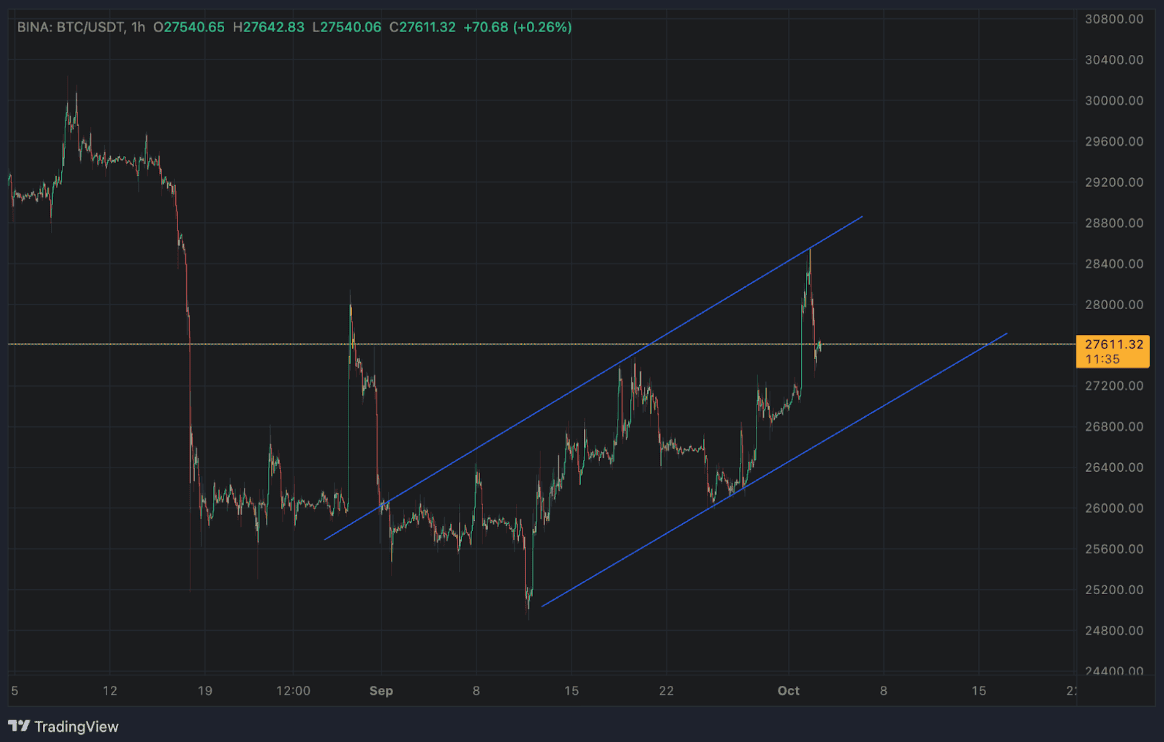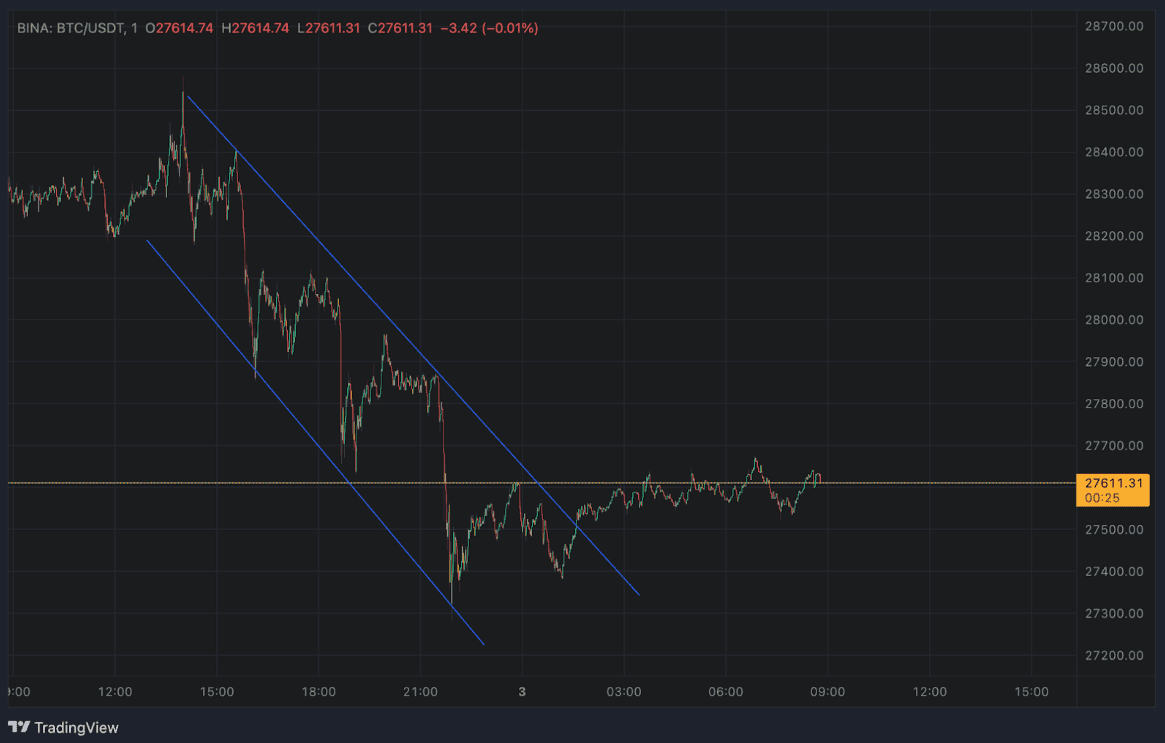Important Concepts
Chapters
- What Is Technical Analysis
- Important Concepts
- Assumptions
- Advantages and Disadvantages
- Technical Analysis Tools
- Fastest Way to Learn Technical Analysis
- Technical Analysis of Bitcoin
- Technical Analysis of Ethereum
- Technical Analysis of The Financial Markets – Traditional Finance Vs. Crypto
- How to Use Multiple Time Frames Technical Analysis in Crypto
Studying price movements in the market and predicting future prices is an essential approach for anyone who wants to navigate the unpredictable world of cryptocurrency trading. Technical analysis can help you do exactly that, and it’s an extremely valuable tool, especially for new traders.
Technical analysis is built on a few key concepts that are necessary to understand to make well-informed trading decisions. These fundamental concepts help traders make sense of market activities, find the right moments to trade, and avoid unnecessary risks.
In this article, you’ll find out more about these basic ideas, namely:
- price action
- market trends
- support and resistance levels
They’re all crucial for creating effective trading plans and dealing with the complexities of crypto markets. Understanding these elements of technical analysis will help you build strong trading skills and improve your chances of making profitable trades in the cryptocurrency environment.
The Importance of Price Action
Price action refers to the movement of an asset’s price, as observed on a price chart. It’s one of the foundational elements of technical analysis in cryptocurrency trading and is crucial to understand for anyone willing to delve into the trading realm. When traders talk about price action, they refer to the study of specific price movements over time, which allows them to interpret and predict future price changes.
Historical prices hold significant importance in this regard as they offer a glance into how asset prices have changed over time, reflecting the market’s reactions to various events and conditions. By studying the past movements of cryptocurrency prices, traders can identify patterns and trends that can help in making predictions about future price movements.
Observing and interpreting price action can be as simple as spotting whether the price is moving up, down, or sideways. When the price is moving upward, it is often said to be in a ‘bull market,’ signaling a good time to buy. Conversely, a downward-moving price denotes a ‘bear market,’ which might be a signal to sell. A sideways-moving price means the market is in consolidation, and traders usually watch closely for a breakout in either direction. But more on that later.
Analyzing historical prices aids traders in distinguishing between market noise and genuine market movement trends. It helps draw a more accurate picture of market sentiment and to understand better the demand and supply dynamics of a particular cryptocurrency. For instance, repeated failure of the price to move beyond a certain level might indicate a strong resistance, informing traders of potential reversal points.
In summary, understanding price action and the importance of historical prices is paramount for traders, as it allows them to read the market conditions, make informed predictions, and ultimately, make more effective and profitable trading decisions. Whether a seasoned trader or just starting in the crypto world, mastering price action is an indispensable skill in your journey to successful trading.
Uptrends, Downtrends, and Sideways Trends
Market trends show the general direction in which an asset’s price, like a cryptocurrency, is moving. Recognizing and understanding these trends is another pivotal aspect of technical analysis, enabling traders to make more insightful and strategic trading decisions. Market trends are typically classified into three main types: uptrends, downtrends, and sideways trends.
- Uptrends:
An uptrend is characterized by an asset’s price consistently reaching higher highs and higher lows. In simple terms, this means the price is generally moving upward over time. Recognizing an uptrend early is crucial for traders, as it usually represents a good opportunity to buy or hold assets, anticipating further price increases.

- Downtrends:
Conversely, a downtrend occurs when the price of an asset is consistently making lower highs and lower lows, indicating the price is generally decreasing over time. Identifying a downtrend is equally important, as it allows traders to decide whether to sell or short-sell their assets, mitigating potential losses due to declining prices.

- Sideways Trends:
A sideways trend, or horizontal trend, is when the price of an asset is moving within a horizontal range, showcasing neither significant upward nor downward movement. This trend often reflects a balanced supply and demand or a period of consolidation before the price moves up or down. In such scenarios, traders often adopt a wait-and-watch strategy or look for breakout points to enter or exit trades.

Understanding market trends is fundamental to navigating the crypto markets effectively as it provides you with the information you need to anticipate potential price movements and adjust your trading strategies accordingly.
By being able to identify whether the market is in an uptrend, downtrend, or moving sideways, you can better align your actions with market movements, maximizing gains, and minimizing losses.
Support and Resistance levels
Support and resistance levels are critical concepts in technical analysis, acting as the foundation for identifying potential entry and exit points in cryptocurrency trading. Understanding these levels is crucial for traders to manage risks effectively and optimize their trading strategies.
The support level is a price level at which a downtrend tends to pause due to a concentration of demand or interest in buying. It represents an area where buying interest significantly surpasses the selling pressure. When the price of a cryptocurrency reaches this level, it is generally believed to be undervalued, leading to increased buying and, subsequently, a price rebound. Recognizing support levels helps traders determine optimal points to enter a trade or to place stop-loss orders.

Conversely, the resistance level is a price point where a rising trend typically halts due to a concentration of supply or selling interest. It denotes an area where selling interest exceeds buying pressure. When a cryptocurrency's price hits this level, it's often considered overvalued, resulting in increased selling and, usually, a price reversal. Identifying resistance levels aids traders in deciding when to exit a trade or place sell orders.

- Usage and Importance:
Traders use these levels to identify areas where the price of a cryptocurrency is likely to change direction. By doing so, they can make more informed decisions on whether to buy, sell, or hold. When the price breaks through a support or resistance level, it might signify that the current trend is gaining strength, and a new support or resistance level will likely form.
Support and resistance levels are crucial in predicting potential price reversals and continuations, allowing traders to set precise entry, exit, and stop-loss points, manage risks, and strategize effectively. Mastering the ability to accurately identify and utilize these levels can significantly enhance trading decision-making and outcomes, regardless of one's trading experience in the fast-paced cryptocurrency market.
Conclusion
Technical analysis is a critical tool in cryptocurrency trading, especially for those striving to gain a competitive edge in this volatile market. By understanding the foundational concepts of price action, market trends, and support and resistance levels, traders can interpret market behaviors, make informed predictions, and strategize their trades effectively.
Key takeaways:
- Price action enables traders to read the market conditions and make informed decisions by studying the historical prices and their movements.
- Uptrends, downtrends, and sideways trends help you align trading strategies with market movements, allowing you to optimize gains and minimize potential losses.
- Accurately identifying support and resistance levels allows traders to pinpoint potential entry and exit points, manage risks proficiently, and refine their trading strategies.
Whether a beginner or an experienced trader, continual learning and adaptation to the ever-evolving crypto landscape are paramount for achieving consistent trading success.arkets. Understanding these elements of technical analysis will help you build strong trading skills and improve your chances of making profitable trades in the cryptocurrency environment.

